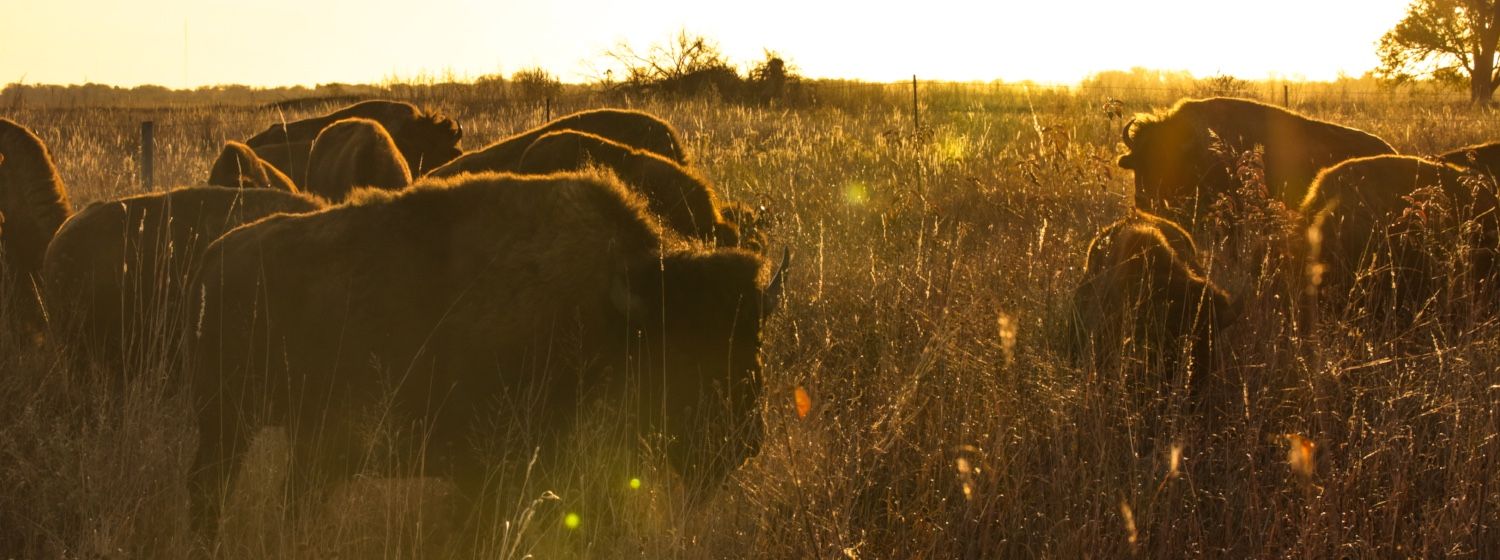The Crane Trust bison (Bison bison) were brought to the property and released into the prairie in February of 2015. Since then land management and research efforts have focused on three areas to further knowledge and better the health of these individuals.
Our first area focuses on health and genetic diversity which allows us to make decisions about which bison to remove from the herd, and which areas of the country we should bring bison in from. Our second research and management focus involves bison behavior and relationships so we can understand what factors are important for the social and emotional health of bison. The final area is bison’s impact on their habitat where we study vegetation, bird, and small mammal response to bison presence. These efforts have been highly collaborative with some projects being managed by outside groups with input and safety training by the Crane Trust staff. Our bison conservation and research program aims to study and maintain our herd’s social and physical health, improve and maintain the genetic diversity and purity of our herd and collaborate for the genetic recovery of bison everywhere. Finally, we are also managing bison grazing with adaptive management strategies to promote biological diversity. However, the best safety practices for working near or with bison for both bison and our staff or guests are always top priority.
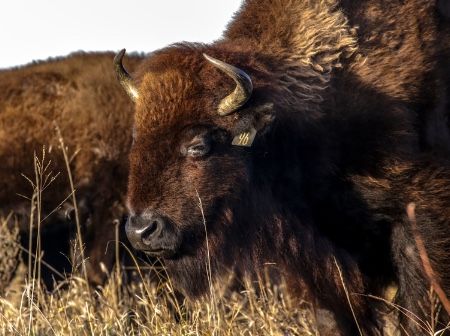
When bison were first brought into semi-captivity many of them were bred with cattle (Bos taurus) leading to hybridization of the two. However, this practice was ended largely because the desired effect of taming bison did not occur. There are two main issues with the hybridization of bison. Firstly, this could change the ecological impact from what ‘true’ bison would have done to the prairie and so presents a research and ecosystem problem. The other problem is that if bison were ever to become an endangered species and most were hybridized the hybrids would receive no protection. Therefore, as a conservation oriented organization that wishes to simulate and research possible historic effects of bison on relict tallgrass prairie, we aim to maintain genetic integrity as well as diversity in our bison herd. This means that we have geneticists examine the genetic code of bison before they are brought into our herd and we evaluate our calves during our fall working (when they are 6-8 months old). The genetic diversity of bison is very important as the large purebred herds were isolated from each other for many decades, and this isolation could lead to inbreeding, especially when herds are as small as ours. Thus far we have been very successful at increasing the genetic diversity of our bison and have reached a point of very high genetic diversity. This is a good practice because health issues arise with genetic inbreeding, and the Crane Trust is participating in efforts to intermix bison throughout pure herds in the central U.S. to improve the genetic diversity of the species. Also, in cooperation with the School of Veterinary Medicine at the University of Nebraska-Lincoln, we are researching the best ways to minimize both health issues such as parasites, fungal infections, and birth defects in our herd. For example, as of the 2017 working we are attempting to understand how effective deworming calves is both in terms of decreasing parasite loads, and length of effectiveness.
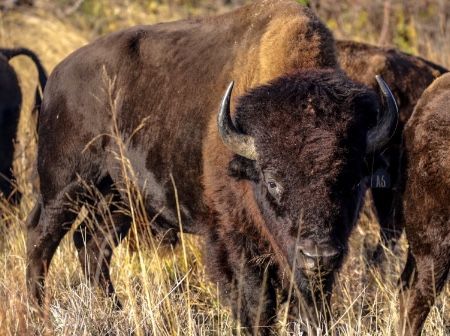
During the first year of bison reintroduction we focused heavily on their behavior and relationships to provide a baseline before any new bison were brought into the herd. The group of bison brought to the Crane Trust constituted a group that had lived together throughout their lives and so had a reasonably intact social structure. We spent the summer of 2015 examining the social relationships between bison and used this data to examine behavioral patterns by hierarchy structure. We also utilize this herd to research low-stress handling techniques, which are vital to successfully caring for these animals. We strive to understand the factors that make low-stress handling difficult, as well as the techniques that will decrease the strain on a given bison. Currently, we are partnering with University of Nebraska – Kearney researchers to continue this work and evaluate movements and forage preferences as Bison from other herds from private organizations, and agencies such as the National Park Service, and the Fish and Wildlife Service are integrated into ours. Projects currently include: parasite loads and body conditions, grazing exclosures and bison movements, and re-mapping the social hierarchy to detect changes after three new sets of bison have entered the herd. Partnerships like these allow young researchers to gain a wealth of experience, and assist the Crane Trust in magnifying its impact in the scientific field by becoming known as a high-quality research station. If you are interested in partnering with us in research or other bison activities, please contact us.
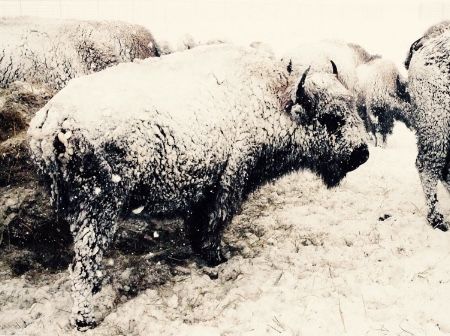
Our final research area involves tracking bison impacts on the habitat. We accomplish this through long-term monitoring of vegetation, birds, and small mammals with a focus on pairing sites across habitat type, grazing regime (bison, cattle, rest), and management actions (fire, haying, tree/shrub removal, invasive plant removal). However, since 2016 we have also focused on studying the impact of bison wallows which opens the prairie in ways not captured by long-term monitoring. Bison are ecosystem engineers and therefore are creating the habitat we think of as associated with them. Over time our long-term data will show the transformation of prairies untouched by bison for about a century. Studies like these will help researchers make more informed inferences about historic prairie conditions and guide land managers in best practices for our tallgrass endemic species. If you want to keep up with Crane Trust events, updates, and research sign up for our e-newsletter and view our publication list.
Video Credit: Platte Basin Timelapse Project
